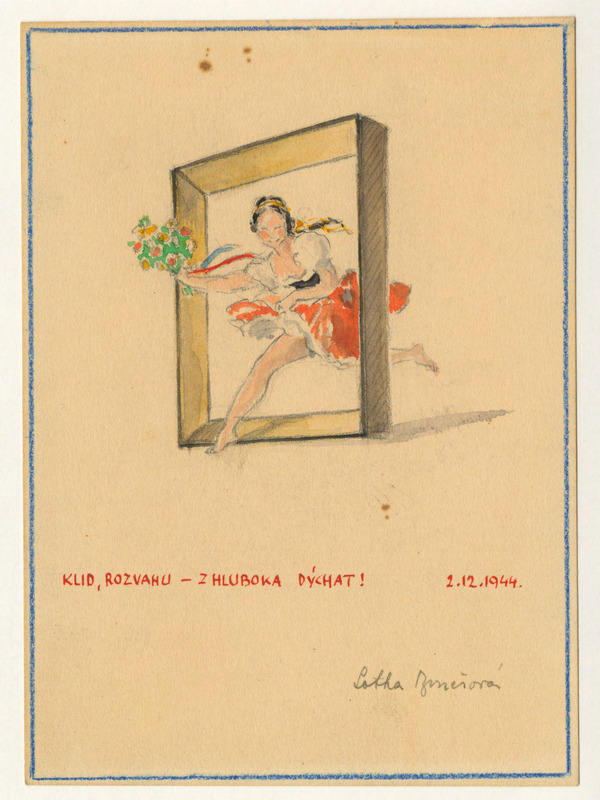Biographical/Historical Information
Charlotta - also called Lotha - Buresova was a Jewish artist born in Prague on November 4, 1904, the only daughter of a tailor. At a young age she showed signs of artistic talent and her family saw to it that she received an extensive education, including painting. After studying with private tutors, she attended the Industrial Art School for three years, and then a further three years at the Prague Academy of Art. Her paintings were mainly figurative and classical in style, and she gave all her work to friends as gifts. Buresova married young to a non-Jewish lawyer and gave birth to a son. When the Nazis occupied Czechoslovakia, she divorced her husband in order to protect her family. In 1941 she was forced to leave her home, which had been confiscated by the Nazis. In July 1942 she was imprisoned in Terezin camp and put to work in the Sonderwerkstätte (special workshop), where she painted roof tiles for the Germans. Later she was sent to the artists' workshop. She was ordered to paint copies of classical masterpieces, while her own works were done in pencil, crayon, chalk, watercolors and a few oils. The subjects of her paintings, some of which depicted the extensive artistic-cultural activity in Terezin, included portraits of children, musician friends like Gideon Klein and Otto Karas-Kaufmann, flowers and dancers.
According to Buresova there were different points of view among the artists in Terezin. The Dutch artist Jo Spier believed that artists must paint even when cannons were firing. Buresova disagreed, insisting that there were times when she could no longer create. But Spier would push her, encouraging her not to give in but to continue creating. She would later say that of all her art works those produced in Terezin were the most frank and direct because she was able to work independently.
Her situation in Terezin was better than that of most of the other inmates. She worked all the time, had a room of her own, possessed books and was in touch with her friends. A Nazi officer, who was very impressed by her artistic talent, prevented her deportation. He asked her to paint the Holy Mother. Buresova painted the Madonna with a very realistic tear in her eye and when the officer saw it he was so impressed that he said to her: "Never complete the painting. As long as you are working on it, you will not be deported to the East." Three days before the liberation of Terezin, Buresova, along with a small number of inmates, succeeded in escaping and returning to Prague in the Swedish ambassador's car.
Charlotta Buresova lived in Prague until her death in 1983. Her son, a doctor, still lives there. Some of the works she produced after the war were based on her memories of Terezin. Buresova donated some of her works from Terezin to the art collection of Beit Lohamei Haghetaot (the Ghetto Fighters' House Museum).
Reproductions and Permissions
We welcome fair use of this content. Please credit the Leo Baeck Institute in your citation. For usage policies and to request higher resolution images, see Reproductions and Permissions.
Citation
Burešová, Charlotta: Terezin, Card for Franz Feigl (1899-1963), Leo Baeck Institute, 84.502.
